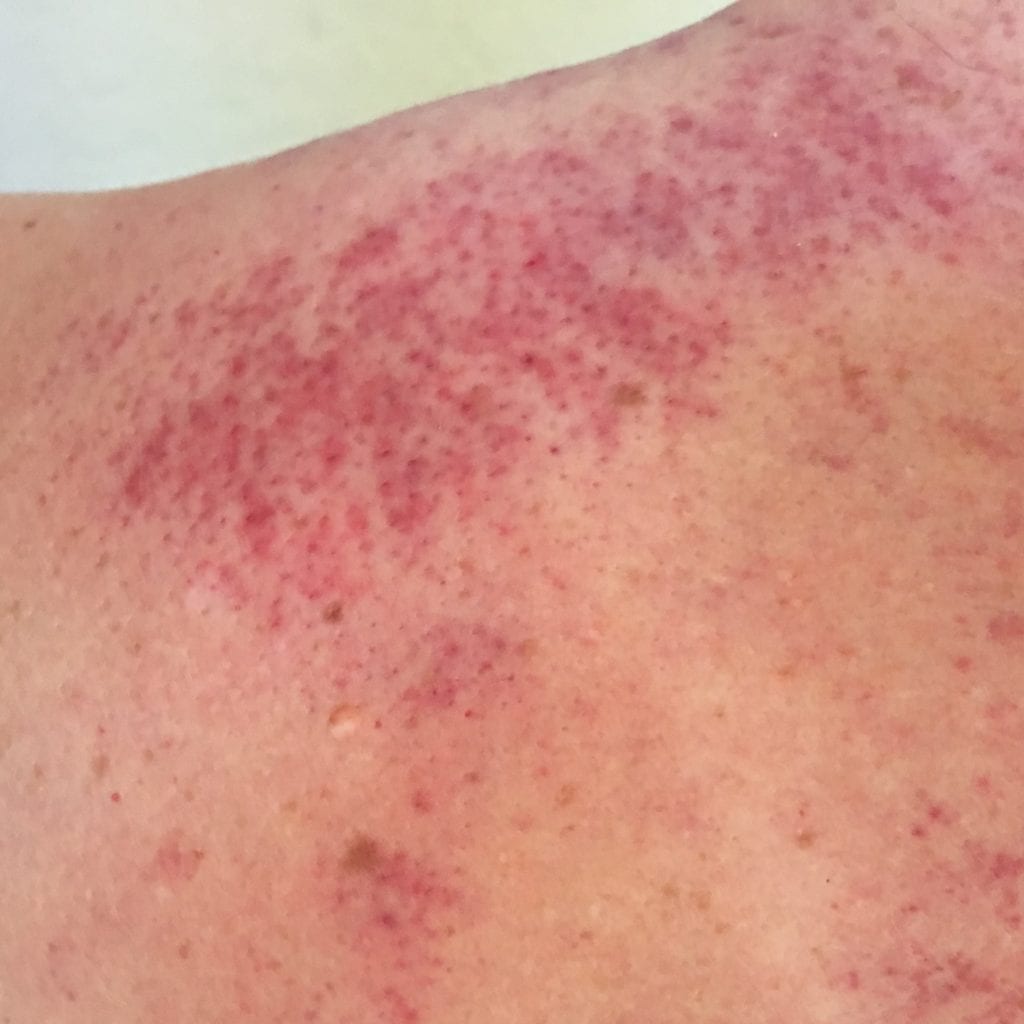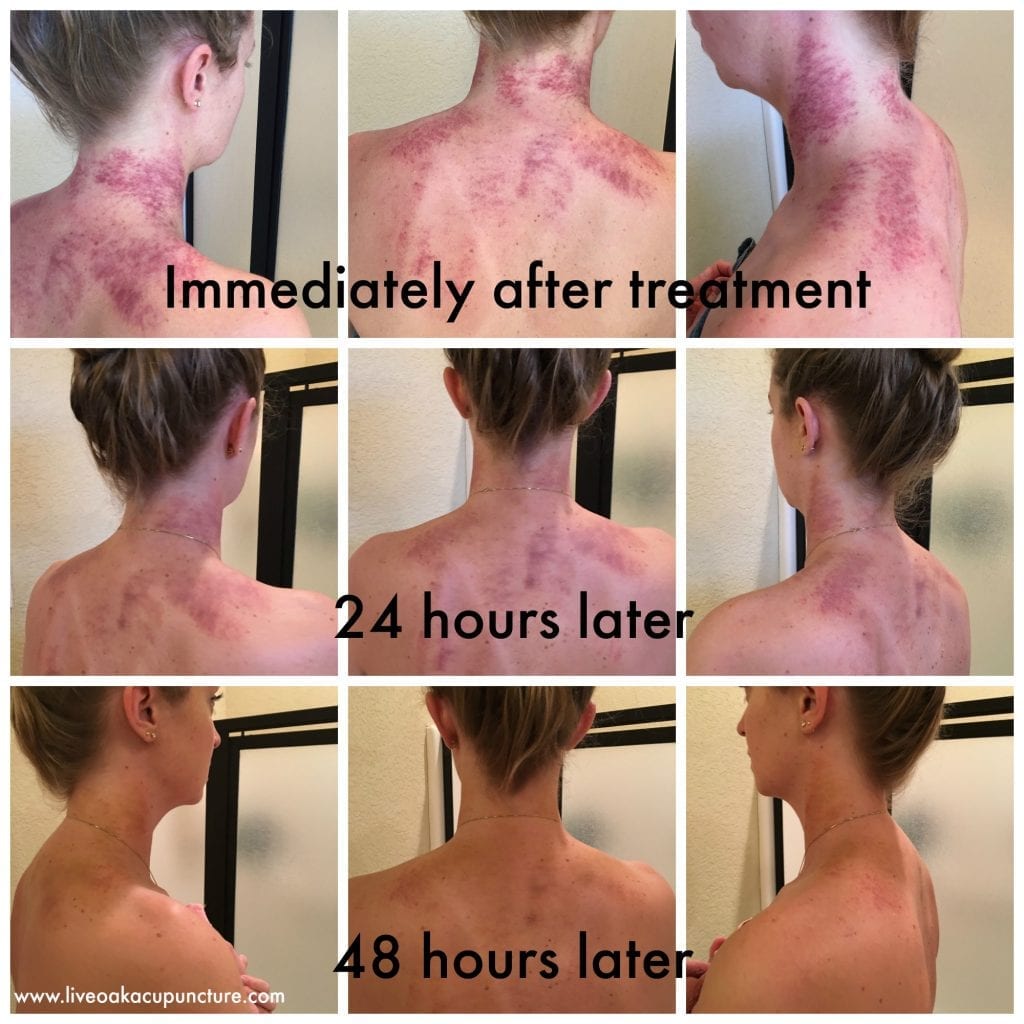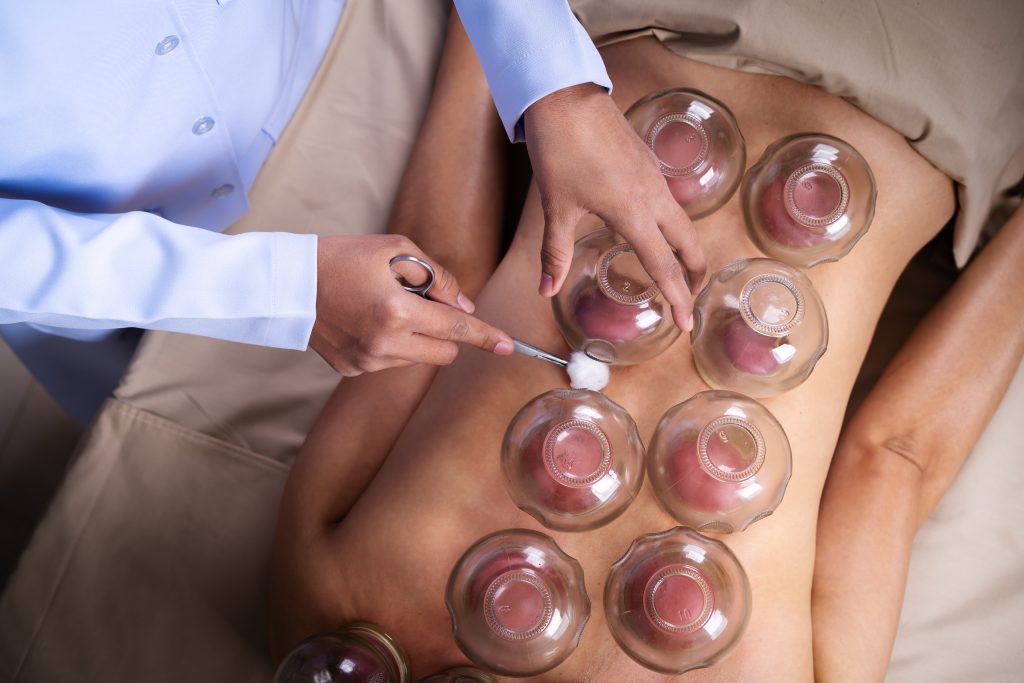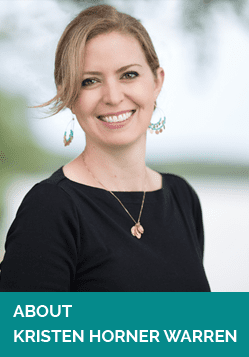NON-NEEDLE THERAPIES
EFFECTIVE OPTIONS FOR THE NEEDLE-PHOBIC (WE CATER TO COWARDS)
Although acupuncture is much less painful and scary than most people expect, I also understand that there are instances in which non-needle treatments are preferred. Non-needle therapies are a good option for for children and for individuals with severely compromised immune systems.
The combination of acupuncture and non-needle therapies such as gua sha and/or cupping is amazing and can shave weeks of treatment time off a case when compared to using acupuncture alone.
Gua Sha
I injured my neck last summer and was used to dealing with chronic pain from my injury. I would push through the pain during the day and take a few Advil before bed, when the pain bothered me the most. I started seeing a chiropractor for it as well, seeing him bi-weekly with little to no relief. Then I saw Kristen post something online about using gua sha massage for a crick in her neck! What could it hurt to try?? The technique itself was not painful at all. I could describe some parts of it as intense, but not painful. I told myself beforehand that if the gua sha even reduced my pain by 25% I would consider it a success. I am almost 2 months out from treatment and most days my neck does not even bother me at all!! It is so nice to be able to fall into bed at night and get comfortable on my pillow again. I highly recommend gua sha massage!
– Meg Watwood, Hewitt TX
What are the benefits of gua sha?
The benefits of gua sha are numerous. Dr. Arya Nielsen, who is considered to be the Western authority on gua sha, says it is good for “any chronic disorder involving pain or inflammation.” Gua sha resolves spasms and pain, increases range of motion, and promotes normal circulation to the muscles, connective tissues, and organs. A session of gua sha will often head off an oncoming common cold and can be a huge help in quieting a lingering cough. Research has shown that gua sha causes a four-fold increase in microcirculation of surface tissue, reduces inflammation, and stimulates the immune system. Gua sha also increases the activity of heme-oxygenase-1 (an enzyme that acts to reduce internal organ inflammation). The upregulation of HO-1 partially explains the benefit of gua sha for internal organ problems such as cough, asthma, hepatitis, and liver disease.
Are the marks from gua sha abrasions or bruises?
Although the area treated with gua sha looks like road rash, the skin surface is completely intact and there is no bleeding associated with the technique. The discoloration caused by gua sha is not a bruise. Bruising occurs when a blow or shear force damages capillaries and causes bleeding into the tissue. In contrast, during gua sha, blood cells are extravasated (or pressed) through the capillary walls without damage to the capillaries or the surrounding tissues. The area that is treated often feels a bit tender following gua sha (similar to a mild sunburn) but the overall result is immediate relief of pain and improvement in range of motion.

What happens during and after gua sha?
When performing gua sha, the therapist uses a smooth-edged tool to repeatedly stroke the skin. Gua means “to rub” or “press stroke”. Sha is a term that describes the blood congestion in surface tissue in areas where the patient may experience stiffness and pain; sha is also the term for the little red dots that are raised from applying gua sha. The medical term for the red dots that gua sha causes is “petechiae”. These petechiae represent blood cells that have been pressed outside of capillaries (tiny blood vessels) as the practitioner repeatedly strokes the skin. The body begins the process of reabsorbing these blood cells immediately and it is this process of reabsorption, along with a dramatic increase in local circulation, that results in the anti-inflammatory, immune-stimulating, and pain-relieving benefits associated with gua sha.
What is the significance of the color of sha and how fast it fades?
The petechiae caused by gua sha range in color from fresh red to dark red, blue, or nearly black. When gua sha is applied at the site of a new or relatively acute problem, the petechiae are usually bright red. This is because the blood stuck in the connective tissue under the skin has not been there for long. In contrast, the petechiae that result when gua sha is applied to an area of chronic pain or injury are often bluish or even black. This is because the blood has been stagnant for an extended period. How quickly the petechiae fade following gua sha is also significant. In young people with healthy, vital circulatory systems, petechiae fade very quickly. If I perform gua sha on my children in the morning, the petechiae are often nearly gone by the end of the day. In contrast, in older individuals, individuals with sluggish circulation, or in cases of long-standing pain, the petechiae may take nearly a week to fade completely.
What does it look like?

Self-care after gua sha
- Until the appearance of your skin returns to normal, avoid exposing the treated area to drafts, direct sunlight, or extremes of temperature.
- In cool or windy weather, wear a scarf to cover the treated area. Wear a shirt to cover the treated area at night.
- Drink plenty of water in the three days following treatment.
- Although the treated area often feels dramatically less painful and more flexible, be aware that the area is vulnerable to re-injury if it is overtaxed by vigorous activity in the days following treatment.
Auriculotherapy
For the past ten years I have made frequent use of ear pellets, seeds, and tacks (also called auriculotherapy) to reinforce the effect of the acupuncture treatments I perform in my office. I have found this treatment to be of key importance in the long-term management of chronic pain in many of my patients.
Auriculotherapy has been in the news a lot lately, from Penelope Cruz being photographed at a recent event with tiny gold balls on acupuncture points in her ears, to the United States Air Force developing an auriculotherapy protocol called Battlefield Acupuncture that is being used to treat pain in troops in combat zones, to ear seeds receiving favorable coverage in the New York Times (below).
I have completed training with Richard C Niemtzow, M.D., PhD, MPH (inventor of Battlefield Acupuncture) and offer the complete Battlefield Acupuncture protocol using the same semi-permanent tacks that are used by the Air Force physicians.
Cupping
What is cupping?
Cupping is a simple suction technique that has been used by various cultures all over the world for thousands of years. Historians believe that cupping is the most ancient technique in Chinese medicine, predating acupuncture. Suction is applied to the skin using glass, rubber, plastic, or silicone cups (in ancient times animal horn or sections of bamboo were generally used).
Cupping therapy was used in Egypt over 3,500 years ago, where its use is represented in hieroglyphic writing. In ancient Greece, Hippocrates recommended the use of cups for a variety of ailments, while in the early 1900’s British physician Sir Arthur Keith wrote about how he witnessed cupping performed with excellent success. Cupping was practiced by such famous physicians as Galen (131-200AD), Paracelsus (1493-1541), Ambroise Pare (1509-90), and surgeon Charles Kennedy (1826). In China, extensive research has been carried out on cupping and the practice is a mainstay in government-sponsored hospitals of Traditional Chinese medicine (TCM). During the Beijing Olympics, numerous news stories covered the use of cupping amongst elite athletes (see photo above and links below). The fundamental therapeutic value of cupping has been documented through several thousand years of clinical and subjective experience and has advanced its application to many areas.
Although cupping is a simple technique, it should only be done by an expert practitioner. Although some massage therapists, chiropractors, or estheticians offer cupping therapy, they generally lack the in-depth training and experience that is required to apply cupping therapy safely and effectively. At best, cupping therapy performed by an untrained practitioner will be ineffective. At worst, it can cause burns, blisters, or scar tissue that result in further pain as opposed to providing the relief you are seeking. I have the extensive training and experience, as well as specialized equipment, that is required to perform cupping safely and effectively.
My background includes advanced training with Susan Johnson (www.tungspoints.com), the premier cupping therapist in the United States, as well as over two decades of experience in using this special technique.
How does cupping help?
The vacuum action of cupping rapidly facilitates the release of rigid soft tissues, it loosens and lifts connective tissues, it breaks up and drains stagnation, and it increases blood and lymph flow to skin,muscles, and connective tissues. It does all of these things far more rapidly and effectively than any other type of therapy, including acupuncture, massage therapy, chiropractic adjustments, medications or even surgery.
Pain implies a blockage in the flow of energy and blood through a particular area. When injuries occur deep in the muscle, bleeding often results, which causes deep bruises and the accumulation of sticky proteins in the soft tissue. The combined presence of these elements causes stagnation and impaired micro-circulation in the area, resulting in pain, dysfunction, and stiffness that can persist for decades.This accumulation of cellular waste in the muscles or joints can be very difficult for the body to remove. The vacuum formed by cupping draws out old non-circulating stagnant blood and sticky fluids from painful areas, bringing these waste products to the skin level and away from the injury so that healthy free circulation can be restored to the affected area. This makes space for the oxygen, living cells, and nutrients that are needed for healing. At the skin level, the body’s capillary system can carry the toxins away to the liver and the kidneys, where they can be metabolized and excreted.
In addition to its use for chronic pain, cupping is very effective for airborne allergies, cold and flu, chronic and acute bronchitis, and difficulties with breastfeeding. Cupping is also a powerful anti-aging technique. By the age of forty, approximately 60% of the body’s micro-circulation is no longer active. This contributes to age-related aches, pains, and fatigue. By powerfully drawing blood into the body’s smallest blood vessels, cupping helps to re-establish a more youthful micro-circulatory system. This results in muscles and joints that are more comfortable and are more resistant to injury.

What causes cupping marks?
In areas where there is dead blood, lymph, cellular debis, pathogenic factors, and toxins present in the body, cupping will leave marks which indicate that the stagnation has been moved from the deeper tissue layers to the surface (see photo at right and links below for example photos of what these marks look like). The color and pattern of the marks depends on the level of stagnation in the area. Marks range from bright red to dark purple and usually last from three days to a week (sometimes longer if a person is very sick or sedentary). If there is no stagnation present (or if the cause of the pain is a nerve or bone problem), there will be only a light pink mark which disappears in a few minutes to a couple of hours. Sites where there is old trauma or injury may require multiple cupping treatments to remove all stagnation. Patients will find in follow up treatments the marks will be lighter and lighter as the pathogens are systemically removed from the body. Cupping marks are NOT bruises and they are generally not painful. Although the cupping treatment itself can be slightly uncomfortable and the marks can look dramatic, the presence of color in the cupped areas guarantees that the patient will feel immediate relief after the treatment.
Self-care after cupping
It is important following cupping to keep the treated area covered and protected from drafts and extremes of temperature (hot tubs, cold swimming pools, etc). This is because cupping powerfully opens up the surface of the body. If the area is not kept warm and covered, cold and other pathogenic factors can invade and cause spasm, tightness, and stagnation to return.
Please plan to have cupping therapy done at a time when you will be able to keep the treated area covered for at least three days following the treatment. The day before a formal event where you will be wearing a backless dress is NOT the time to have cupping therapy done! Drink plenty of water after your cupping treatment to assist your body’s efforts to clear toxins through its normal excretory channels.
If your cupping marks are very dark or the area treated is very large, I may prescribe topical and/or oral herbal medicines to assist your body’s efforts to carry away the released toxins. It is fine to take over the counter pain relievers such as Tylenol or Advil to help with any lingering discomfort following a cupping session; such lingering discomfort is more common in patients with chronic conditions such as fibromyalgia. The combination of acupuncture and cupping is dynamite — cupping can shave weeks off the treatment time that is required to heal many conditions.
Cupping therapy in the news
On Your Marks for an Ancient Therapy
Traditional Chinese Medicine Technique Uses Heated Glass Cups to Heal Ills
Laser Point Stimulation
This treatment is extremely safe and uses 450 nm (calming blue) and 635 nm (stimulating red) cold lasers to stimulate acupoints. The really cool thing about this treatment is that recent research suggests that acupuncture meridians function like optical fibers or “light pipes” and transmit light energy throughout the body (this research is described in more detail below). Stimulating acupuncture points with lasers helps stimulate healing, reduce inflammation, stimulate the release of natural pain-relieving substances, and reinforce physiological balance.
Surprisingly effective
The treatment only takes a few moments and results that I have had to this point suggest that in many cases laser treatment is as effective as needle treatment. For instance my husband has severe chronic elbow pain as a result of nerve damage. His work is physically demanding and his pain is often quite intense in the evening and most nights he has a hard time falling asleep because of his pain. Last night I used my new lasers to treat him and he was snoring within minutes. He slept well last night and reports today that he feels unusually good!
Modern research shows similarities between acupuncture meridians and fiber optics
Some of the most interesting research about acupuncture is currently happening in Korea. A North Korean anatomist named Bonghan Kim discovered anatomical structures that correspond to acupuncture meridians in humans and other mammals in the early 1960’s. But, because he did not reveal the microscopic dye staining technique which he used to make these vessels visible, very few scientists were able to confirm his discovery. Then, in 2002, researchers in South Korea directed by Kwang-sup Soh began using modern micro-anatomical methods to reinvestigate these structures. At first this network of threadlike vessels was called the Bonghan System after Kim Bonghan. It has recently been renamed and is now known as the Primo Vascular System (PVS). The PVS consists of fine, threadlike structures that are found under the skin, inside of blood and lymphatic vessels, and also forming web-like networks on the surfaces of the internal organs. The Bonghan channels are filled with a circulating fluid that includes microcells containing DNA molecules which, like stem cells, are capable of regenerating damaged organs and tissues. Furthermore, the DNA in these microcells may be capable of emitting laser like coherent light called biophotons which would allow for the communication of incredible amounts of information at the speed of light. This biological fiber optic network would have the capacity to manage the organizational complexity of embryonic development and the ongoing repair and maintenance of our body that keeps us healthy in spite of demanding physical and emotional stresses. To learn more about this research, please click here.

